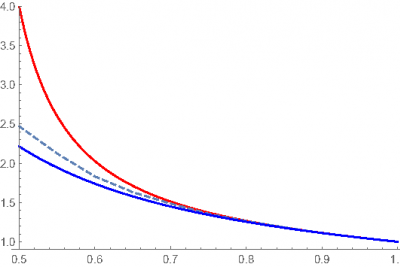Project leaders: Professors Matt Junge and Jim Nolen
Project manager: Erin Beckman
Team members: Irina Cristali, Vinit Ranjan, and Jake Steinberg
Project summary: Imagine flipping a biased coin with probability p of heads over and over again. Each time a heads comes up, you write down the number of flips since the last heads appeared. Stop flipping the coin the first time your list is a connected set 1,2, ... , K for some number K. For example, if you get heads on the first toss then K=1. If your list instead read 3,2,3,2,4,1 then K=4. Notice we do not know what K is until we do the experiment, so it is random. K describes the size of the first block in certain random permutations of the positive integers. Blocks help us understand these larger random structures. Our main result studies the size of K as the probability p of flipping a heads gets very small. It turns out that it grows like exp(c/p) for a precise constant c defined by a strange looking integral.
This project culminated in the following published paper:
I. Cristali, V. Ranjan, J. Steinberg, E. Beckman, R. Durrett, M. Junge, and J. Nolen, Block size in Geometric(p)-biased permutations, Electronic Communications in Probability volume 23 (2018), 1-10.

